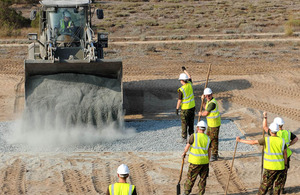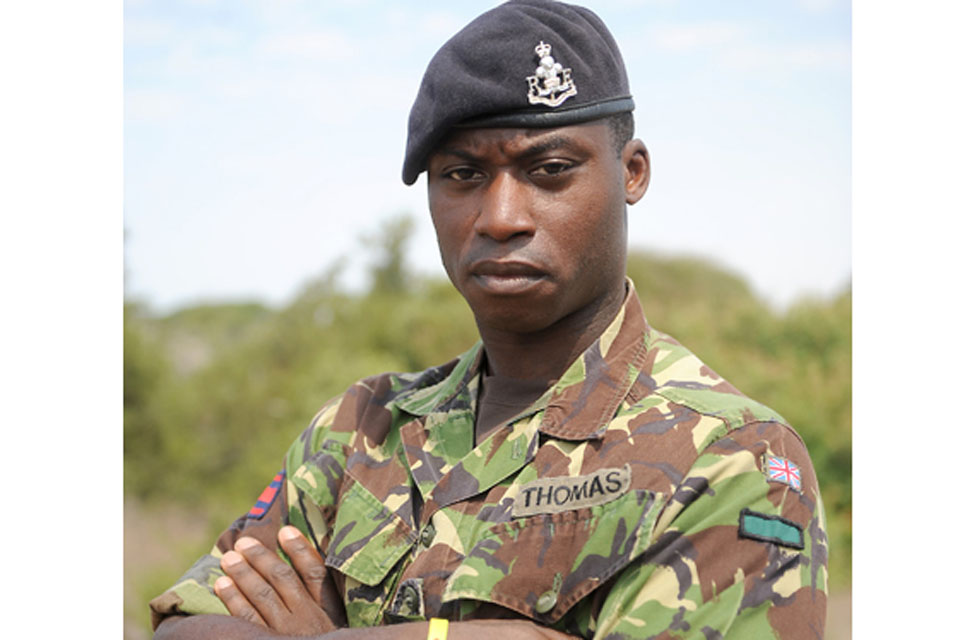Army Reserves build IED search facility
Army reservists from Wales are thinking like Taliban bomb-makers in order to build a realistic improvised explosive device (IED) search facility to train soldiers about to deploy to Afghanistan.

Army reservists from the Royal Monmouthshire Royal Engineers constructing an improvised explosive device search training facility in Cyprus for Afghanistan-bound British soldiers [Picture: Corporal Barry Lloyd, Crown Copyright/MOD 2012]
The reservists from the Royal Monmouthshire Royal Engineers are constructing stretches of road and sand pits in which IEDs will be planted exactly like those used by insurgents.
When finished, the facility will be used by instructors to show soldiers training in Cyprus how they can hone their visual skills, or the ‘Mark One Eyeball’, as the instructors refer to it, to detect a roadside bomb rather than only depending on high-tech equipment:
Eighty per cent of IEDs can be detected by sight if you know how to read the ground sign,” explained Sergeant John Swithenbank of 2nd Battalion The Yorkshire Regiment.
The battalion commissioned the facility as part of their training package, which includes a two-week course on ground sign awareness that is open to any other battalions also due to deploy:
The aim of the course is to try to save lives by enabling soldiers to spot an IED without having to be nearly on top of it with a metal detector before identifying where the device is,” Sergeant Swithenbank continued.
Very conscious of threats
A number of the Army Reserve engineers, who all volunteered to undertake the job, have completed tours of duty in Afghanistan themselves, so they fully recognise the value of the facility and appreciate how quickly things can change on the ground:

Lance Corporal Kenneth Thomas [Picture: Corporal Barry Lloyd, Crown Copyright/MOD 2012]
“I deployed to the Babaji area of Helmand in the summer of 2010, and even in those six months the techniques and materials used in IEDs had changed so much to escape our searching devices,” said 38-year-old Swansea resident Lance Corporal Kenneth Thomas, who was in Afghanistan to construct a major road that ran through an area littered with IEDs.
We were very conscious of the threat of IEDs around us while we were working, so I think this kind of training facility is a brilliant idea. The guys on patrol need to be so clued up, or it’s not safe. The value of being able to read the signs that indicate a possible IED is immense. And that’s what this training area gives.
Leading the project on the ground, Corporal Richard Lewis, 49, who is a mechanical engineer with Tata Steel in his civilian life, couldn’t agree more:
This is a massive training tool for the soldiers who are deploying to Afghanistan, which will give them a good background in what to look for in the very dangerous areas where they could be working,” he said.
I can’t think of anything else more worthwhile that we could possibly be doing than preparing troops for their combat role in Afghanistan.
There is a very real sense of satisfaction in construction projects like this where we are doing something that is going to help the guys going out into theatre and hopefully keep them safe.
Swansea University graduate Sapper Ross Campbell, 25, who hopes to deploy in the future, addded:
I’ve worked on a number of Army Reserve construction jobs in the UK for home training, but this is the first time I’ve built something directly in support of operations - which is also proving to be a good learning tool for those of us thinking of deploying.
In the Army Reserve you wait for the opportunity to deploy, so for us to come out here and do anything to help those soldiers who are told to go is something that a lot of us are quite proud of.
The Royal Monmouthshire Royal Engineers (Militia) is the only remaining militia unit in the British Army and, as such, is the oldest regiment of the Reserve Forces, having appeared as early as 1539 in the Royal Muster of Military Units in the United Kingdom.